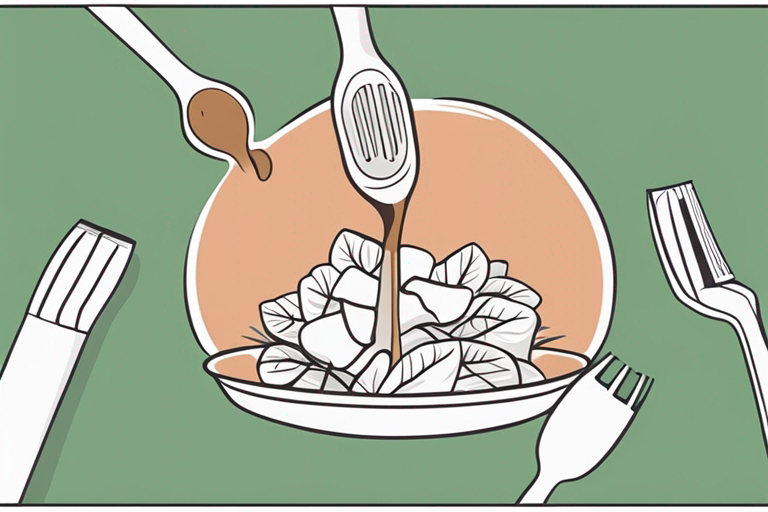
Is It Safe to Use Salad Dressing After the Expiration Date?
Is It Safe to Use Salad Dressing After the Expiration Date?
In the hustle and bustle of daily life, it's easy to overlook the expiration dates on the products in our pantry and fridge. Salad dressings are a staple in many households, adding flavor and zest to our greens and veggies. But what happens when you find a bottle of salad dressing that's past its expiration date? Is it still safe to use? In this comprehensive guide, we'll explore the ins and outs of using salad dressing after the expiration date and provide you with practical tips for ensuring food safety.
Still unsure if This Food is safe?
Every situation is different. Get a personalized food safety verdict for your this food based on the date, storage, and condition — in seconds.
👉 Check Food Safety NowUnderstanding Expiration Dates on Salad Dressing
When it comes to salad dressings, you'll typically find two types of expiration dates:
-
"Best By" Date: This date indicates the period during which the salad dressing is at its peak quality in terms of flavor and texture. Consuming the dressing after this date doesn't necessarily mean it's unsafe, but the quality may have deteriorated.
-
"Use By" Date: This date is more critical in terms of food safety. Consuming salad dressing after the "Use By" date can pose a risk of foodborne illness if harmful bacteria have multiplied in the product.
Factors Affecting the Safety of Salad Dressing
Several factors can influence the safety and quality of salad dressing, even after the expiration date:
1. Storage Conditions
Proper storage is crucial in maintaining the safety and freshness of salad dressing. Factors like temperature, light exposure, and air can impact the product's shelf life.
- Temperature: Salad dressings should be stored in the refrigerator after opening to slow down bacterial growth.
- Light Exposure: Exposure to light can cause the dressing to deteriorate faster. Store salad dressings in opaque containers or in a dark place.
- Air Exposure: Oxygen can lead to oxidation and rancidity in salad dressings. Seal the bottle tightly after each use to minimize air exposure.
2. Ingredients
The ingredients used in the salad dressing can also affect its shelf life. Dressings with dairy or egg-based ingredients are more prone to spoilage compared to vinegar or oil-based dressings.
3. Contamination
Cross-contamination can occur if you use a contaminated utensil or dip food into the dressing multiple times. Always use clean utensils and avoid double-dipping to prevent bacterial growth.
Signs of Spoiled Salad Dressing
Before using salad dressing past its expiration date, it's essential to inspect it for signs of spoilage. Some common indicators of spoiled dressing include:
Still unsure if This Food is safe?
Every situation is different. Get a personalized food safety verdict for your this food based on the date, storage, and condition — in seconds.
👉 Check Food Safety Now- Visible Mold: If you see any mold growth on the dressing or around the bottle's cap, discard it immediately.
- Off Odor: A rancid or sour smell is a clear sign that the dressing has gone bad.
- Unusual Texture: If the dressing has separated, curdled, or developed a slimy texture, it's best to toss it out.
Tips for Safely Using Salad Dressing After the Expiration Date
If you're considering using salad dressing that's past its expiration date, follow these tips to ensure safety:
- Perform a Sensory Check: Inspect the dressing for any signs of spoilage before using it.
- Check the Texture: Shake the bottle well and check the consistency of the dressing. If it appears separated or slimy, discard it.
- Smell Test: Take a whiff of the dressing. If it has an off odor or smells rancid, don't use it.
- Taste a Small Amount: If the dressing passes the visual and smell tests, taste a small amount to ensure it hasn't turned sour or bitter.
Conclusion
While expiration dates provide a general guideline for food safety and quality, they are not set in stone. Salad dressing can often be safe to consume after the expiration date if stored properly and showing no signs of spoilage. However, it's crucial to trust your senses and use your best judgment when deciding whether to use expired salad dressing. When in doubt, it's always safer to err on the side of caution and discard the dressing. By following proper storage practices and being mindful of signs of spoilage, you can enjoy your favorite salad dressings safely and deliciously. Stay informed, stay safe, and savor every bite!

Still unsure if This Food is safe?
Every situation is different. Get a personalized food safety verdict for your this food based on the date, storage, and condition — in seconds.
👉 Check Food Safety NowAuthoritative Food Safety References
These agencies and university labs inform every tip and health precaution we publish.
USDA FoodKeeper – Cold Storage Guidelines
Official refrigerator, freezer, and pantry timelines maintained by the U.S. Department of Agriculture.
Visit USDA FoodKeeperFDA Produce Safety Rule & Grower Guidance
Field-to-fridge handling practices that prevent contamination of fruits, vegetables, and leafy greens.
Visit FDA Produce SafetyCDC Foodborne Illness Prevention Hub
Surveillance-backed guidance on pathogens, symptoms, and steps to reduce foodborne illness risk.
Visit CDC Food SafetyUC Davis Postharvest Technology Center
University research detailing optimal storage atmospheres for produce after harvest.
Visit UC Davis PostharvestPenn State Extension – Home Food Preservation & Safety
Peer-reviewed extension bulletins on safe canning, chilling, and reheating practices.
Visit Penn State Extension